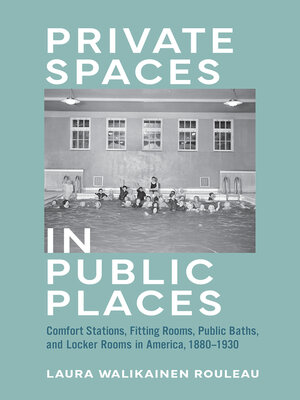Private Spaces in Public Places
ebook ∣ Comfort Stations, Fitting Rooms, Public Baths, and Locker Rooms in America, 1880–1930
By Laura Walikainen Rouleau

Sign up to save your library
With an OverDrive account, you can save your favorite libraries for at-a-glance information about availability. Find out more about OverDrive accounts.
Find this title in Libby, the library reading app by OverDrive.



Search for a digital library with this title
Title found at these libraries:
| Library Name | Distance |
|---|---|
| Loading... |
A unique history of how private spaces in public—such as public restrooms and dressing rooms—developed in the United States at the turn of the twentieth century.
Before the late nineteenth century, Americans bathed, dressed, undressed, and relieved themselves in the privacy of their own homes. Yet from 1880 to 1930, the social forces of urbanization, industrialization, and immigration combined to increasingly lure Americans out of the private realm and into the public sphere. In Private Spaces in Public Places, Laura W. Rouleau offers a distinctive look at the history of how new private spaces were built into the broader world.
In deciding what physical form these spaces would take, the very meaning of privacy manifested through the physical and social construction of these newly emerging spaces. Rouleau combines social history with a material culture–based analysis to examine the growing importance and physical development of spaces such as department store dressing rooms, school locker rooms, and public bathrooms that emerged during this era.
Rouleau argues that privacy was physically and socially constructed, as these sites were designed to segregate users by gender, class, race, and age. Creators of these spaces sought to impose their middle-class values regarding privacy through the physical regulation of users' bodies. Nonetheless, the creators' intentions did not always align with the lived reality of these spaces. By interrogating how people navigated these private spaces, this study offers an understanding of the actual historical experience of privacy at the turn of the twentieth century.







